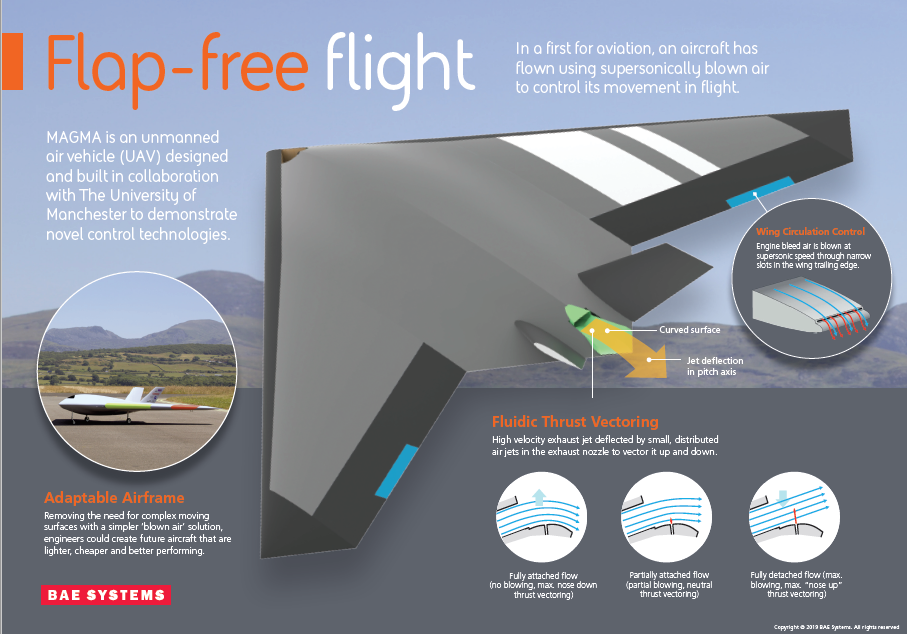The last two posts ask some very good questions.
Aerospaceweb.org | Ask Us - Wing Vortex Devices

May 15th 2019
BAE Systems 3D printing enables first ever flight using supersonically blown air
https://3dprintingindustry.com/news/...wn-air-155452/

Quote:
Drone development undertaken by BAE Systems in collaboration with The University of Manchester has reached a new landmark.
Earlier in May this year, the MAGMA unmanned aerial vehicle (UAV) successfully completed trials proving the capabilities of its “flap-free” flight technologies.
As a result, MAGMA is believed to have become the first vehicle in aviation history to be manoeuvred in flight using supersonically blown air, a technology which improves the complicated task of controlling an aircraft at low-speeds.......................
“Today BAE Systems is 3D printing our components out of titanium and we are flight testing them on the back of a jet engine in an aircraft designed and built by the project team. It doesn’t get much better than that.”...............
“We made our first fluidic thrust vectoring nozzle from glued together bits of plastic and tested it on a hair drier fan nearly 20 years ago.”
|
The thing to perhaps keep in frame of mind is the squeezed high velocity air trapped under the car once liberated from it's confines will slow and expand and increase in pressure very rapidly, hence causing trailing drag behind the car.
What ever one can do to delay or mitigate this disruptive transition should help lower aerodynamic drag.
I just don't see these tiny shark fin devices located where they are having much of a chance to do that but welcome viewing any CFD or wind tunnel images anyone can come up with.